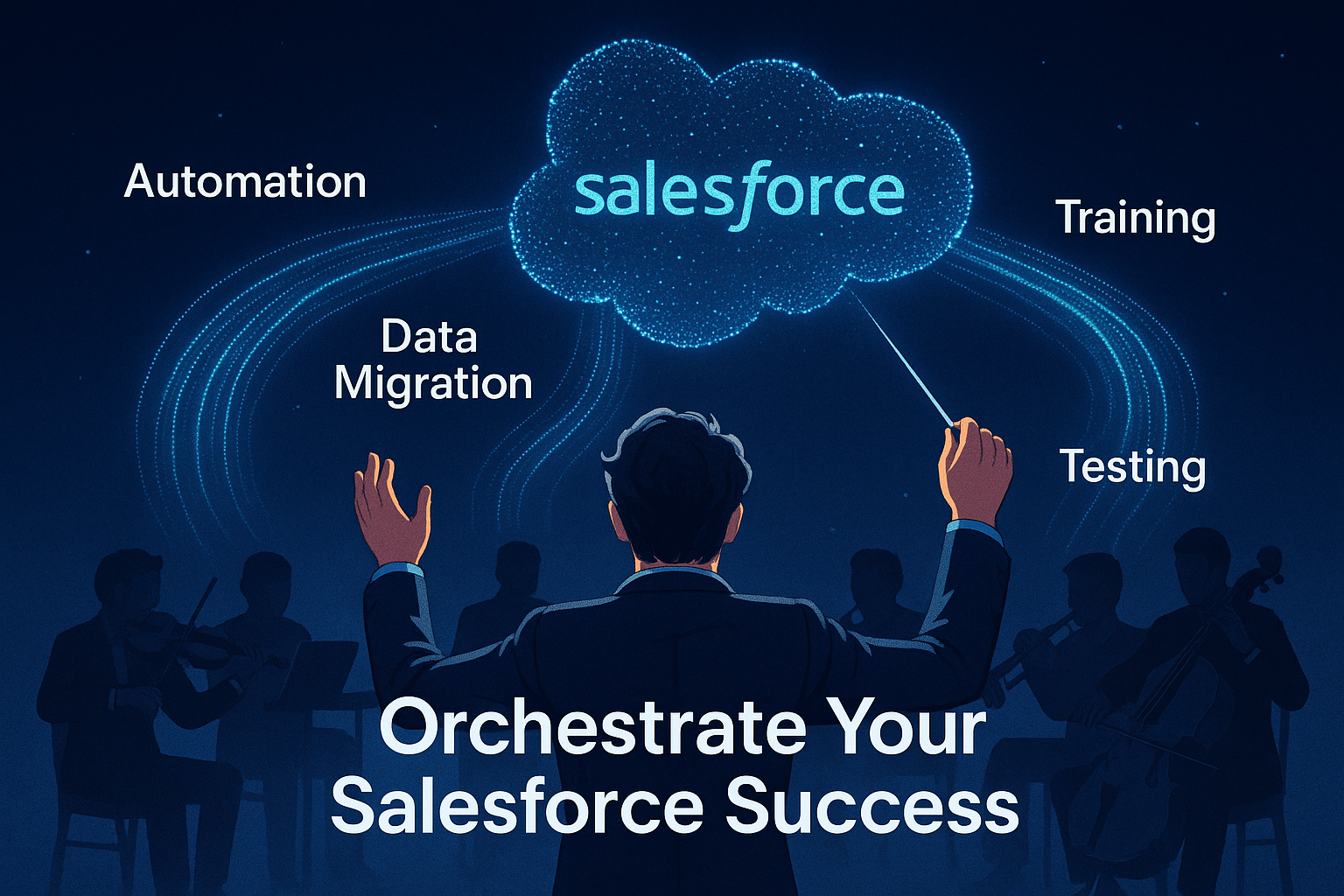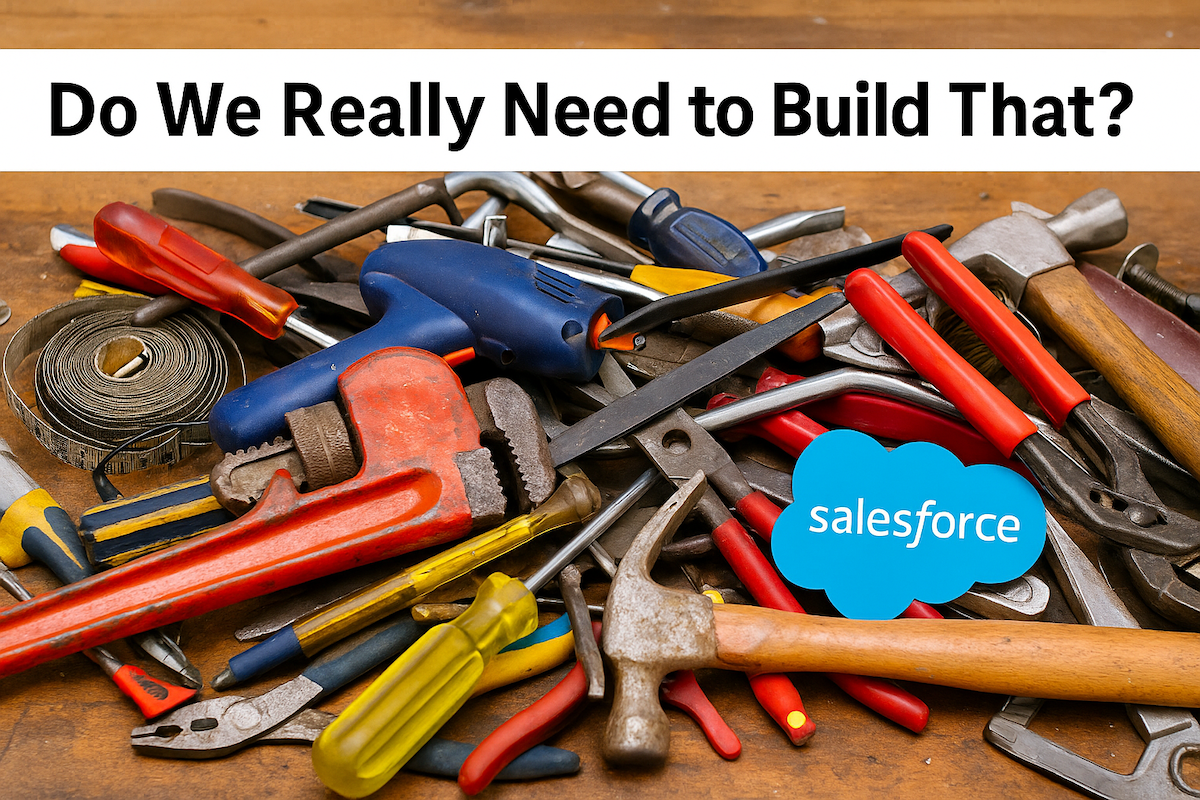 If you’ve spent any amount of time in Salesforce, you’ve probably built a Workflow Rule or a Process Builder or, more likely, inherited a few that seem to have been assembled by a caffeinated raccoon. They’ve been the backbone of Salesforce automation for years: loyal, dependable, and just a little unpredictable when you least expect it.
If you’ve spent any amount of time in Salesforce, you’ve probably built a Workflow Rule or a Process Builder or, more likely, inherited a few that seem to have been assembled by a caffeinated raccoon. They’ve been the backbone of Salesforce automation for years: loyal, dependable, and just a little unpredictable when you least expect it.
But here’s the headline: those trusty old tools are heading into retirement. Salesforce Workflow Builder (aka Workflow Rules) and Salesforce Process Builder are phasing out. Their watch is ending. And the future? It’s not just bright, it's revolutionary, sleek, and goes by the name Salesforce Flow Builder.
This evolution in Salesforce is not a loss; it's a leap into a more efficient and dynamic future.
Before you panic, take a deep breath. This change isn’t a loss. It’s an upgrade.
Salesforce Workflow Rules & Process Builder: A Past Recap
Once upon a time, Salesforce Workflow Builder was the height of innovation. You could send an automatic email, update a field, or create a task without writing a single line of code. Then, Salesforce Process Builder came along, adding a more visual interface and complex logic. It felt like magic.
But as Salesforce orgs grew—with more users, more data, and more automation—things got messy. Workflow Rules overlapped with Process Builders, record saves slowed down, and debugging sometimes felt like detective work without the clues.
Salesforce noticed. And rather than trying to patch two aging systems, they built something new, something that could do everything those tools could do, and more. Enter Salesforce Flow Builder, a unified, powerful automation engine that can handle everything from a simple field update to a multi-object orchestration, all in one place.
The Big Transition: What’s Actually Happening With Salesforce Flow Builder
Salesforce has been preparing us for this shift for years, gently nudging everyone toward Flow Builder with every new release.
Here’s what we know for sure:
- Winter ’23 release: Salesforce began limiting the creation of new Workflow Rules.
- Later 2023 releases: Process Builder creation was gradually disabled as Salesforce encouraged migration to Flow.
- December 31, 2025: The official “end of support and maintenance” date for both tools.
That last bit is key: end of support doesn’t mean end of operation. Your existing automations won’t suddenly stop working on January 1, 2026. They’ll keep running just fine, that is, until they don’t. But worry not! You have time to transition, and we're here to help.
After that date, if something breaks, Salesforce won’t be issuing bug fixes, patches, or feature updates. You’ll still be able to drive your classic automation car, you’ll just have to fix it yourself when it sputters.
In other words: start migrating before your automations turn into museum exhibits. And remember, you're not alone in this.
Why Salesforce Made the Change (Bye Workflow Rules & Process Builder)
It’s easy to feel sentimental about Workflow Rules and Process Builder; they’ve served us well.
For years, Salesforce maintained two separate automation tools that did almost the same thing in different ways. It caused confusion, redundancy, and performance issues, especially in high-volume orgs. As automation needs became more sophisticated, admins often had to rely on developers to fill gaps using Apex.
Salesforce Flow Builder solves all that. It consolidates automation into a single, robust, scalable framework designed for complex business logic and high data volumes when built using best practices. (Of course, governor limits still apply.)
Flow gives admins and developers a shared platform that’s flexible enough for both worlds—no more “clicks vs. code” debates—just one engine to rule them all.
Why Salesforce Flow Builder Rocks (And Then Some)
Suppose Salesforce Workflow Builder and Salesforce Process Builder were reliable old pickup trucks. In that case, Salesforce Flow Builder is the all-electric SUV that can drive itself, sync your data, and tell you when something’s wrong.Flow Builder lets you automate virtually anything:
- Record-triggered flows that replace Workflow Rules and Process Builders for immediate logic.
- Scheduled paths that let you delay actions, like time-based workflows, but are much more flexible. (And for recurring jobs, you’ve got separate schedule-triggered flows too.)
- Subflows for reusing logic across multiple processes, keeping things modular and efficient.
- Flow Trigger Explorer is a visual interface that helps you see which flows are firing on an object and in what order.
- And a powerful debugger, so when something misfires, you can see exactly what happened and why.
Flow Builder keeps getting better with every release—new screen components, better performance, more debugging tools, and tighter AI integration. It’s like watching Salesforce evolve in real time.
If you haven’t explored Flow yet, there’s never been a better moment to start. A quick Salesforce Flow Builder Tutorial (or a Trailhead badge or two) can take you from curious to confident in no time.
The Migration Journey (And What to Watch Out For)
Salesforce knows this transition is a big one, which is why they built the Migrate to Flow tool. It’s a great start and can automatically convert Workflow Rules and Process Builders into Flow equivalents. And it’s a great safety net for data migration, too.
But here’s the catch: it’s not a magic wand. It does a one-to-one conversion of logic, but it won’t clean up duplicates, redundant automations, or poorly structured logic. Those require a human touch.
Most orgs find this process revealing, like opening the closet and realizing how many duplicate sweaters (and random triggers) they’ve been hoarding.
The smartest teams treat migration as both a clean-up and a redesign. The result? A faster, leaner, easier-to-manage Salesforce environment.
So, What Now?
If you’d rather not DIY, start with an audit. Identify which Workflow Rules and Process Builders are still active, and map out how they interact. Then use the migration tool to convert what you can, and rebuild what you can’t using Flow best practices.
Test everything in a sandbox first. Lean on the visual debugger. And, of course, don’t go it alone—Trailhead is full of resources, and every Salesforce Flow Builder Tutorial you complete makes the next automation that much easier.
Most importantly, don’t wait. December 2025 may seem far away, but it’s much closer than it looks on the roadmap—and holiday wares have been out in stores since what seems like Valentine’s Day.
The Bottom Line: Salesforce Flow Builder is Happening
Yes, change is inconvenient. But in this case, it’s absolutely worth it.
Salesforce Flow Builder gives you a cleaner, faster, more innovative way to automate your business, one designed for the modern Salesforce platform. It’s not just the future of automation; it is automation.
So if you’ve been waiting for a sign to start migrating, this is it.
Let’s Flow Together
At Dynamic Specialties Group, we help Salesforce teams modernize their automation, from Workflow Rule audits to Flow-first design and architecture.
We’ll guide you through the cleanup, migration, and optimization process so your organization is ready for what’s next, all without losing sleep over what came before.
Because the future of Salesforce automation isn’t Process Builder. It’s Flow.









SHARE